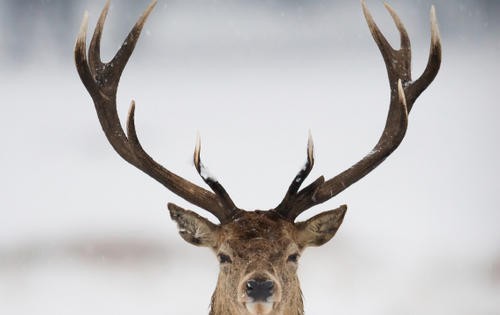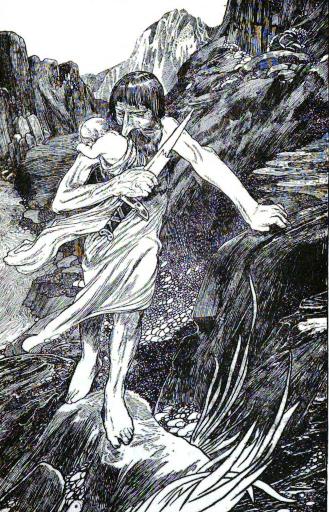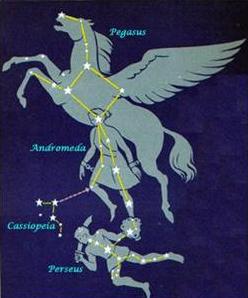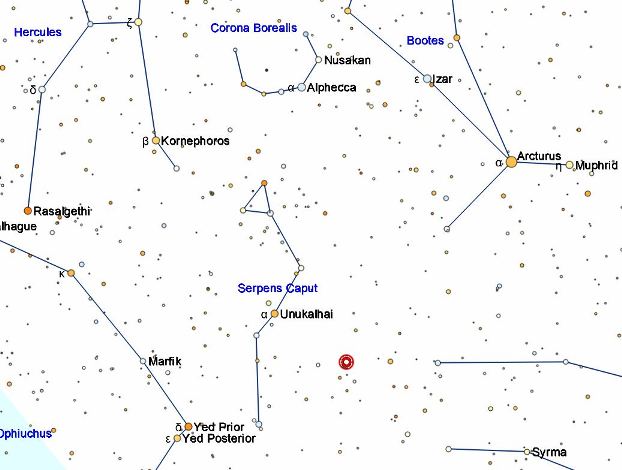The Solar Hero
by Peter Krüger
©2013
 |
[Germanic Astronomy]
In this story, King Sigmund returns home from travel and hears that his pregnant wife Sisibe has been accused of illicit relations with a thrall. Although the accusation is a lie told by two of the King's advisors whose lustful advances Sisibe had rejected, Sigmund believes it and orders the noblemen to take her into the forest and execute her. One of the men is moved by pity for the innocent woman, and the two men fight. As they struggle with one another, Sisibe gives birth to a handsome boy and places him in a glass mead cask, which she lays beside her. During the ensuing violence, one of the men falls and kicks the glass vessel into a river.
Witnessing what happened to her newborn son, Sisibe faints and soon dies. The vessel travels downstream and is cast up onto an island, where it shatters. The child is found by a hind, who carries him home in her mouth, allowing the infant to nurse alongside her twin fawns. In time, the boy is found by Mimir, a wise smith of the forest, who names him Sigurd (or Siegfried) and raises him as his own.
 |
The motif of a person enclosed within an object is a familiar one. The story of Velent, carving an airtight vessel from a tree trunk and sealing himself inside in order to cross the river Visara (Thidreks Saga, chs. 60-61) is especially reminiscent of Sigurd's glass vessel. I would also like to mention Hoddmímis holt where Líf and Lífthrasir hide during the Fimbulvetr.
All of these objects seem to refer to the Pegasus Square. Werner Papke and others have identified the constellation ASH.IKU, "the Field" or "Pegasus Square" with the Sumerian mythical ark of Utnapishtim.
 |
That Sigurd was fostered by Mimir is no surprise since the Pegasus Square, as Hoddmimís holt, is already connected to Mimir, as is the urn of Aquarius, identified with Mímisbrunnr. Mímir himself may be seen as the Southern Fish or the star Formalhaut below the waterfall. I have previously argued that Mimir's severed head has a connection to the star Algol, better known as the head of Medusa, in the constellation Perseus next to Andromeda.
Sigurd's mother Sisibe, who dies at his birth is represented by the constellation Virgo, which sets at the rising of Andromeda (the hind). Sisibe is the daughter of King Nidung. In my investigation of the Völund myth, I previously identified Nidung with the constellation Böotes and his daughter Bödvild with Virgo.
Of interest, Sigurd's death also seems to be connected to the same region of the sky. In variant versions of this tale, Sigurd is killed within a chamber, in a forest, or at a Thingstead. All of these might be used to describe the Pegasus Square. In one version he is killed while bending over a well (the urn of Aquarius below the Square), as his horse stands nearby (head of Pegasus).

Sigurd seems to originally be a sun hero. His adventures could be explained by the heliacal rising of the sun in different, subsequent constellations. The dragon Fafnir appears to be depicted in the constellation Serpens, the serpent, Swedish “Ormen”. In addition to the rising sun, Sigurd seems to be associated with the constellation Hercules, sitting in a pit formed by the constellation Ophiuchus. So far I have not paid much attention to the heart of the dragon. Actually, the brightest star of Serpens, Unukalhai, Alpha Serpentis, is also named Cor Serpentis or the "Heart of the Serpent" and could explain the heart theme.
 |
However, it seems to be more complex. In another context, I followed Björn Jónsson in identifying the asterism of the Teapot in Sagittarius with the heart of the giant Hrungnir slaughtered by Thor. In addition, I also postulated that the strong heart of Högni, cut out on behalf of Atli (seen as constellation Böotes) and presented to his brother Gunnar (Hercules) sitting in a snake pit (Ophiuchus and Serpens) playing a harp (Lyra) with his feet, is depicted in the asterism of the Teapot. So it might be possible that here, for the third time, in a myth we find a reference to the asterism of the Teapot seen as a heart.
Is there any possibility to further establish this theory? Perhaps. Sigurd could have eaten the heart raw. However, he is advised to roast the heart in fire:
„Kom þá Reginn at ok sagði, at hann hefði drepit bróður hans, ok bauð honum þat at sætt, at hann skyldi taka hjarta Fáfnis ok steikja við eld, en Reginn lagðist niðr ok drakk blóð Fáfnis ok lagðist at sofa. En er Sigurðr steikði hjartat ok hann hugði, at fullsteikt myndi, ok tók á fingrinum, hvé hart var. En er frauðit rann ór hjartanu á fingrinn, þá brann hann ok drap fingrinum í munn sér. En er hjartablóðit kom á tunguna, þá kunni hann fuglsrödd ok skilði, hvat igðurnar sögðu, er sátu í viðnum.“
"Then Reginn came forward, saying that Sigurdr had slain his brother, and demanded as a condition of reconciliation that he take Fáfnir's heart and roast it with fire; and Reginn laid him down and drank the blood of Fáfnir, and settled himself to sleep. But when Sigurdr was roasting the heart, and thought that it must be quite roasted, he touched it with his finger to see how hard it was; and then the juice ran out from the heart onto his finger, so that he was burned and put his finger to his mouth. As soon as the heart's blood came upon his tongue, straightway he knew the speech of birds, and he understood what the nuthatches were saying which were sitting in the trees." (Anderson Translation)
If we look at the location of the Teapot asterism, one of its main characteristics is that it lies on the Milky Way. The creation of the Milky Way is described in ancient sources differently. One of the explanations is that the Milky Way stems from the smoke rising up from the constellation of Ara, the smoke altar, (e.g. at Manilius) perfectly explaining the description in Skáldskaparmál. It would not be the only time that Ara appears in the Northern mythology. I explained also the "sviga laevi" of Völuspá and the fire set by Gudrun to the hall of Atli with Ara. The sword used to cut out the heart of the dragon could be explained by the stinger of Scorpio seen as the "sword of heaven" in cuneiform sources and the blood with the body of Scorpio described in other myths as a river (e.g. the Slidr of Völuspá). The birds mentioned in the story (in another version, eagles) seem to correspond to the constellations of Aquila, the eagle and Cygnus, the swan.
